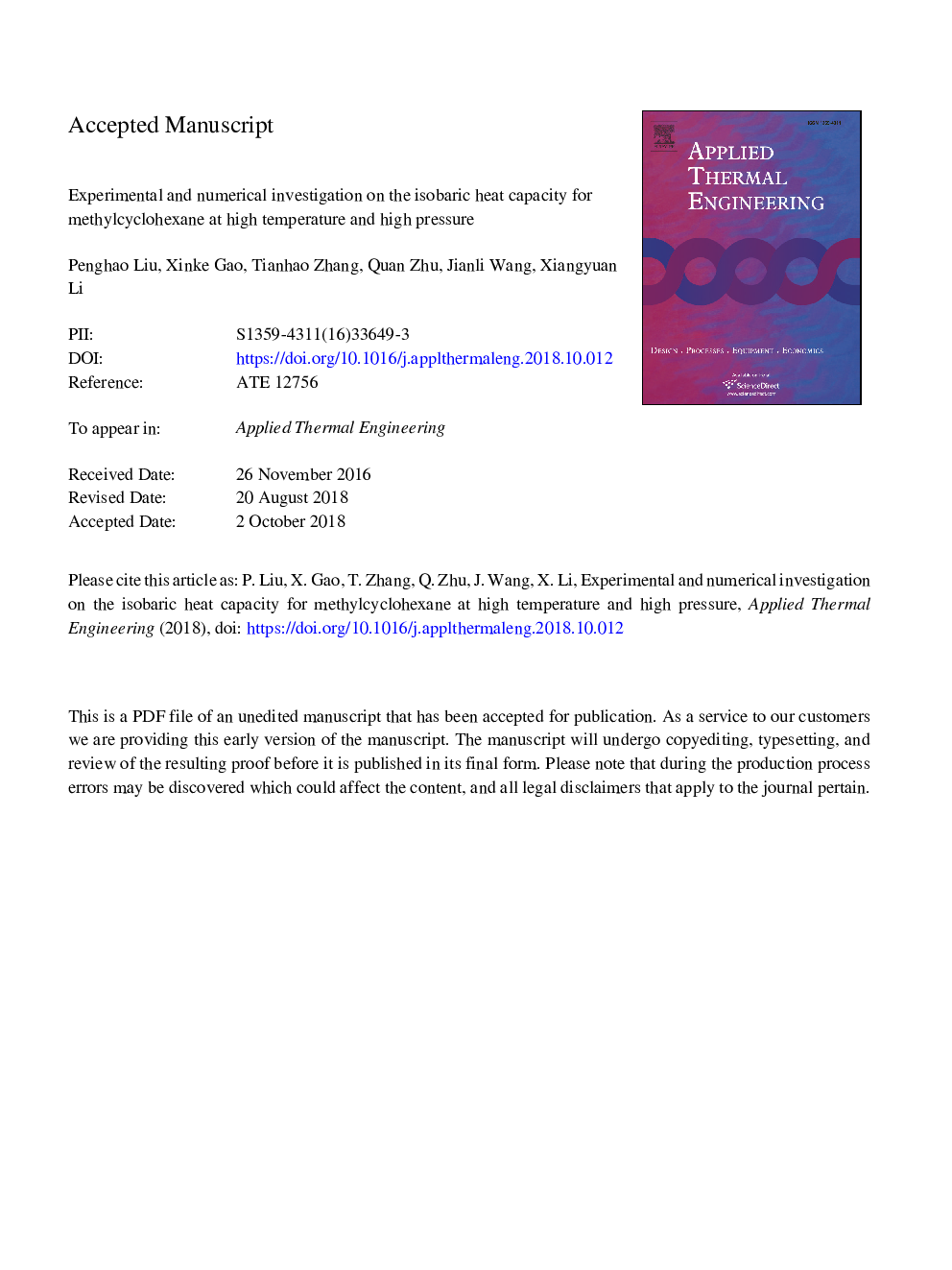| Article ID | Journal | Published Year | Pages | File Type |
|---|---|---|---|---|
| 11263285 | Applied Thermal Engineering | 2019 | 36 Pages |
Abstract
The reliable isobaric heat capacity data of methylcyclohexane are observed on basis of the convective mixing technique in the temperature range from 298.1â¯K to 775.4â¯K and pressure range from 3.5â¯MPa to 5â¯MPa. In the low temperature region, the isobaric heat capacity of methylcyclohexane increases gently as temperature rises. At the pseudo-critical region, the isobaric heat capacity increases sharply to a peak value and then decreases dramatically in a nearly symmetrical way. A five-parameter model and a 3-dimensional drawing of heat capacity are presented. Most data points are within the ±3% error band and the maximum absolute deviation is 4.34%. Based on real-fluid heat capacity data, a linked-list is embedded into the CFD code to simulate the flow characteristics of methylcyclohexane at different pressures. The reliability of measured method is validated by comparing the experimental results with simulation values. Furthermore, an experimental and numerical investigation on flow process of methylcyclohexane is carried out. For the fluids under different pressures, as the temperature reaches the pseudo-critical region successively, the difference of temperature along the tube changes from large to small.
Keywords
Related Topics
Physical Sciences and Engineering
Chemical Engineering
Fluid Flow and Transfer Processes
Authors
Penghao Liu, Xinke Gao, Tianhao Zhang, Quan Zhu, Jianli Wang, Xiangyuan Li,
